The websites you visit on the Internet are basically documents with many attachments—text, images, scripts, and others—that your browser must download and open every time you visit a page.
To speed up browsing and conserve bandwidth on your connection, your browser creates local copies of some of these documents and attachments, called “cache.” So the next time you visit Google or Facebook, you don’t have to wait for everything to download again; some of the files are already cached on your computer and so they load faster.
This is great because you don’t have to wait as long to visit websites that you’ve already visited. But if and when these websites change and your cache happens to contain some of the old files, this can cause these websites to appear broken or prevent their features from working.
So whenever your favorite website loads slowly, looks broken, or just doesn’t work the way it used to, clear your browser’s cache and see if that fixes the problem. Nine times out of ten, it does.
Here’s how to do it on every browser, with screenshots.
Google Chrome
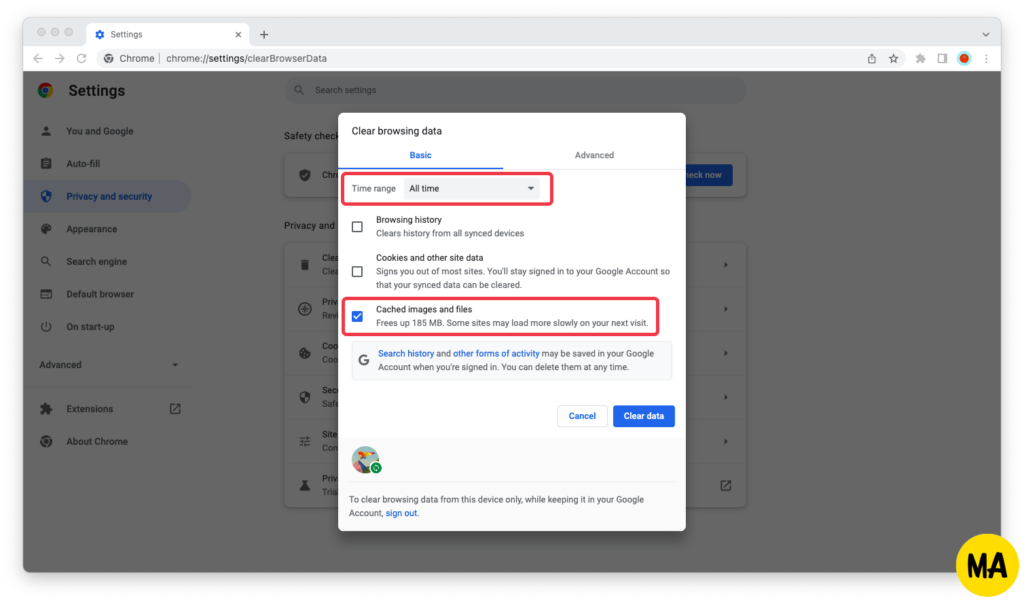
Click on the icon with the three dots in the upper right corner of the browser window. Go to Settings > Privacy and security > Clear browsing data. Select “All Time” under Time range, tick “Cached images and files,” then hit the blue “Clear data” button.
Want more detailed, step-by-step instructions? We’ve got you covered! Check out “How to Clear the Cache in Google Chrome”
Pro tip: There’s a neat way to spare yourself a few clicks when clearing the browser cache in Google Chrome. Instead of navigating to the page manually, type chrome://settings/clearBrowserData into your Chrome browser’s address bar, just like you’d type in the address of a web page, and hit the Enter key on your keyboard.
Firefox
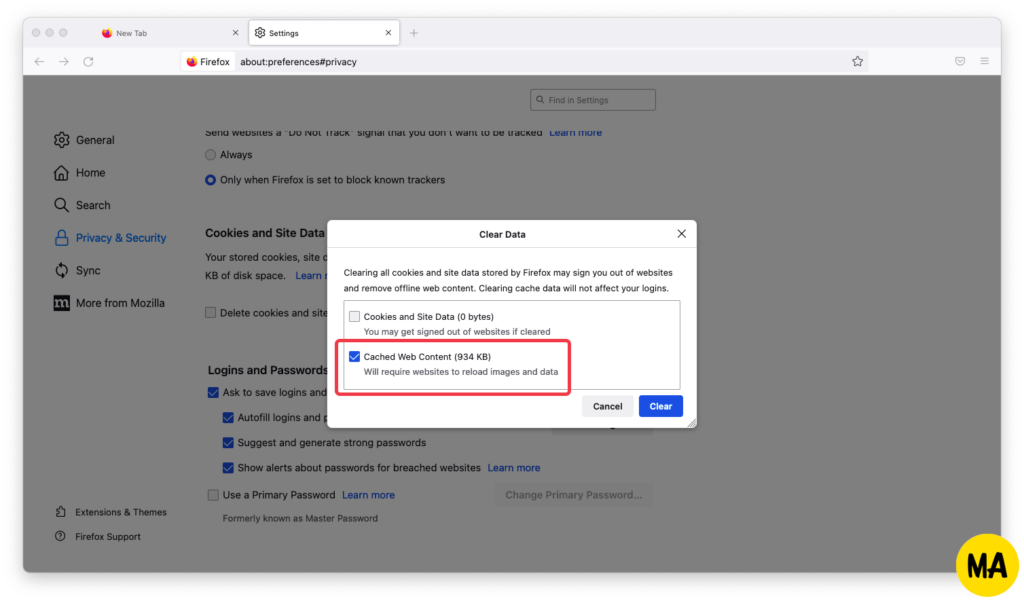
From the burger menu in the upper right corner of the screen, go to Settings, then to Privacy & Security. Scroll down to the “Cookies and Site Data” section and click on the “Clear Data…” button. Tick “Cached Web Content” and hit the blue “Clear” button.
Pro tip: Instead of navigating to the Privacy & Security menu with your mouse, you can simply type about:preferences#privacy into Firefox’s address bar, just like you would do when typing in the URL of a web page, then press the Enter key on your keyboard.
Safari
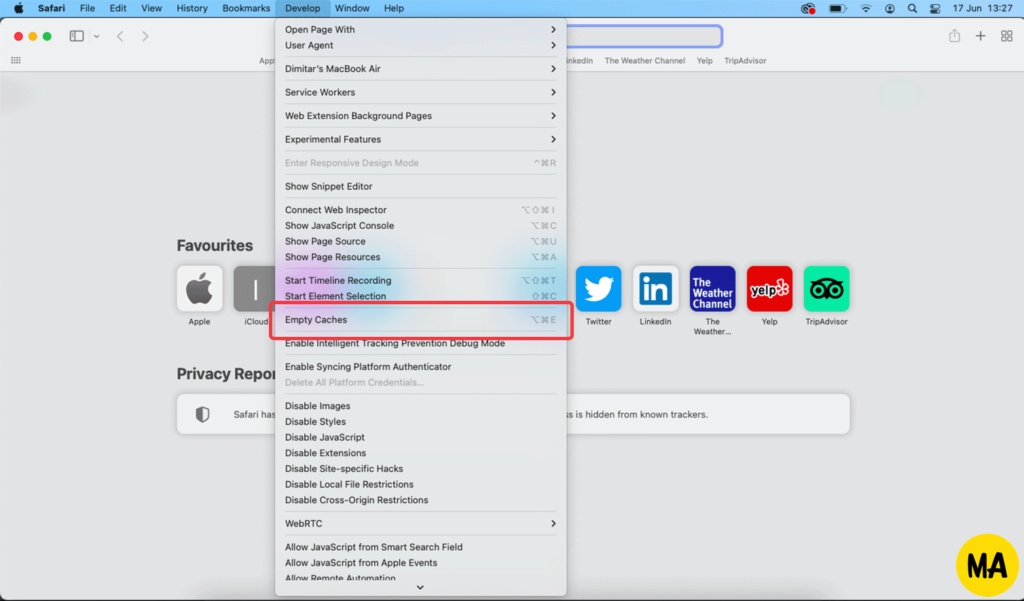
From the menu bar that runs along the top of the screen, click on Safari > Preferences, then go to the Advanced tab and tick “Show Develop menu in menu bar.” From the menu bar again, click on Develop > Empty caches.
Pro tip: If you don’t need the Develop menu any longer, simply follow the first step above and untick “Show Develop menu in menu bar.”
Microsoft Edge
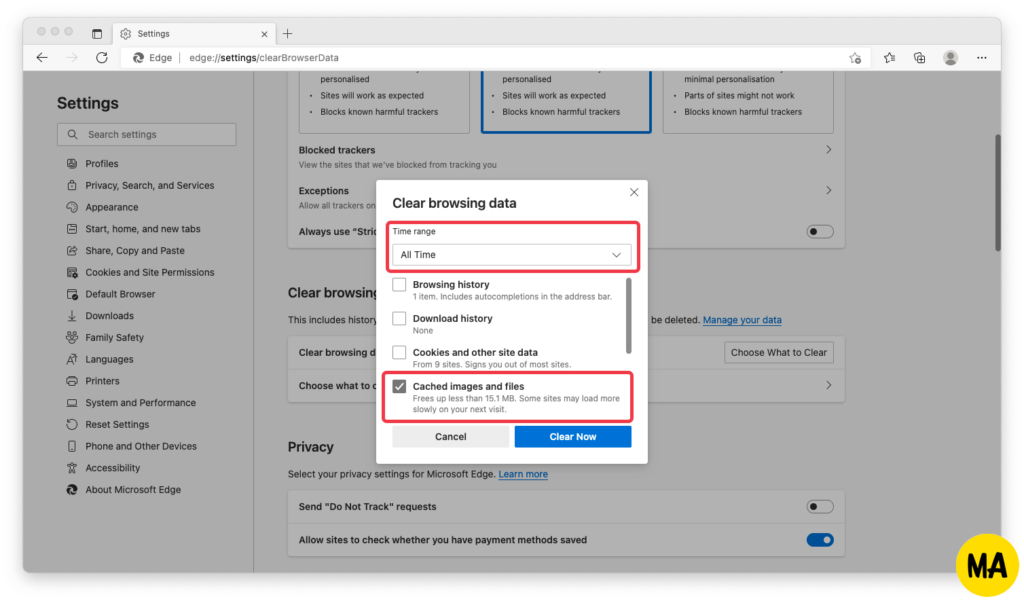
Click on the icon with the three dots in the upper right corner of the screen, then go to Settings. Open the Privacy, Search, and Services tab, then scroll down and click on the “Choose What to Clear” button next to “Clear browsing data now.” Set the Time range to “All time,” tick “Cached images and files,” then hit the blue “Clear Now” button.
Opera
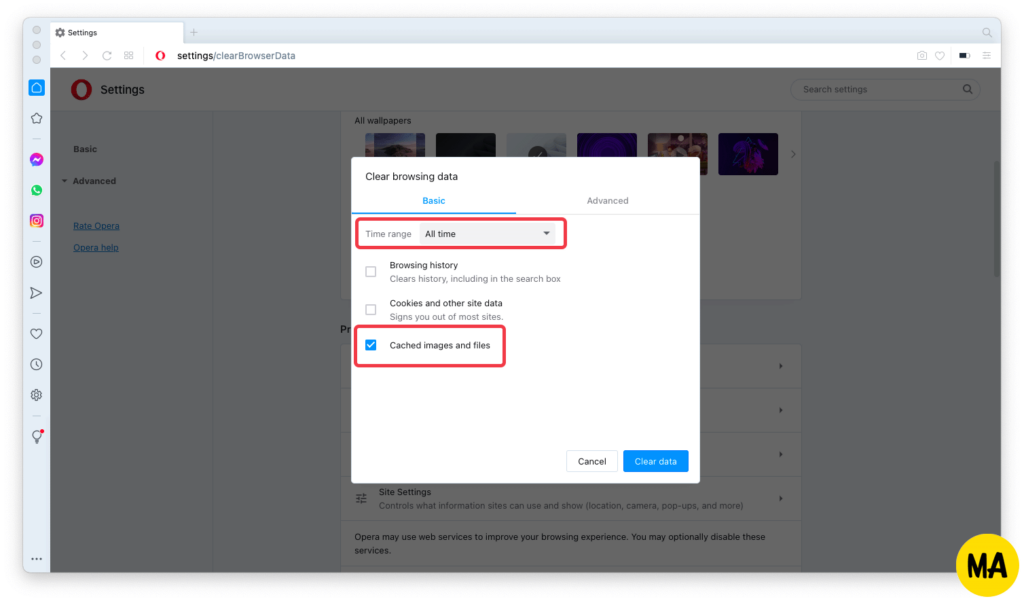
From the left bar, click on the gear icon to open the Settings menu, then scroll down, look for the Privacy and security section, and click on “Clear browsing data.” Set Time range to “All Time,” tick “Cached images and files,” then hit the blue “Clear data” button.
Pro tip: Instead of navigating to the Privacy and security section manually, just type in opera://settings/clearBrowserData as you would do with a regular web page’s address and press Enter on your computer’s keyboard.
Brave
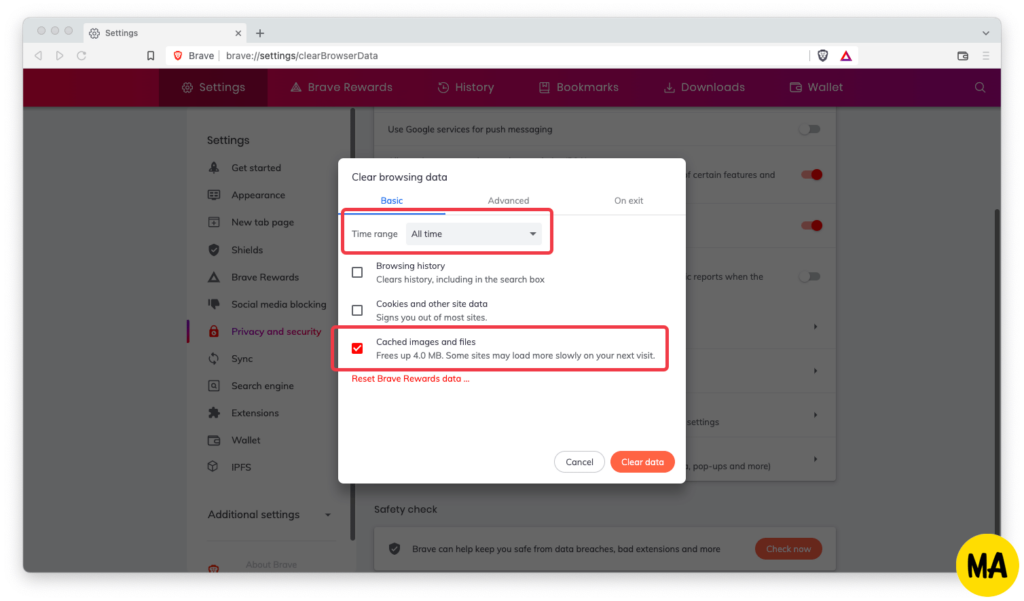
From the burger menu in the upper right corner of the screen, go to Settings, then to Privacy and security. Scroll down, click on “Clear browsing data,” then set “All time” under Time range, tick “Cached images and files,” and hit the red “Clear data” button.
Pro tip: Type brave://settings/clearBrowserData into your Brave browser’s address bar and hit the Enter key on your keyboard to go straight to the Clear browsing data menu.
Browsing History vs. Cache
Browsing history is the list of web pages you have visited with your web browser. These days, most browsers store the history for 90 days for privacy reasons. (All older entries are deleted from your browser automatically.)
The cache is an umbrella term for the documents, media files, and scripts of pages that you’ve already visited on the Internet and that your browser stores locally so that it can load these pages faster on your next visit.
Cache vs. Cookies
Cookies are tiny text files that store your preferences when you interact with websites, as well as your unique IDs used by websites to identify you as a returning visitor.
The cache, on the other hand, contains locally stored documents, media files, and scripts from web pages so that they load faster the next time you visit them.
The browser cache doesn’t contain any personally identifiable data, whereas cookies can. So, typically, you clear cookies for privacy reasons and the cache to fix websites that appear broken.

